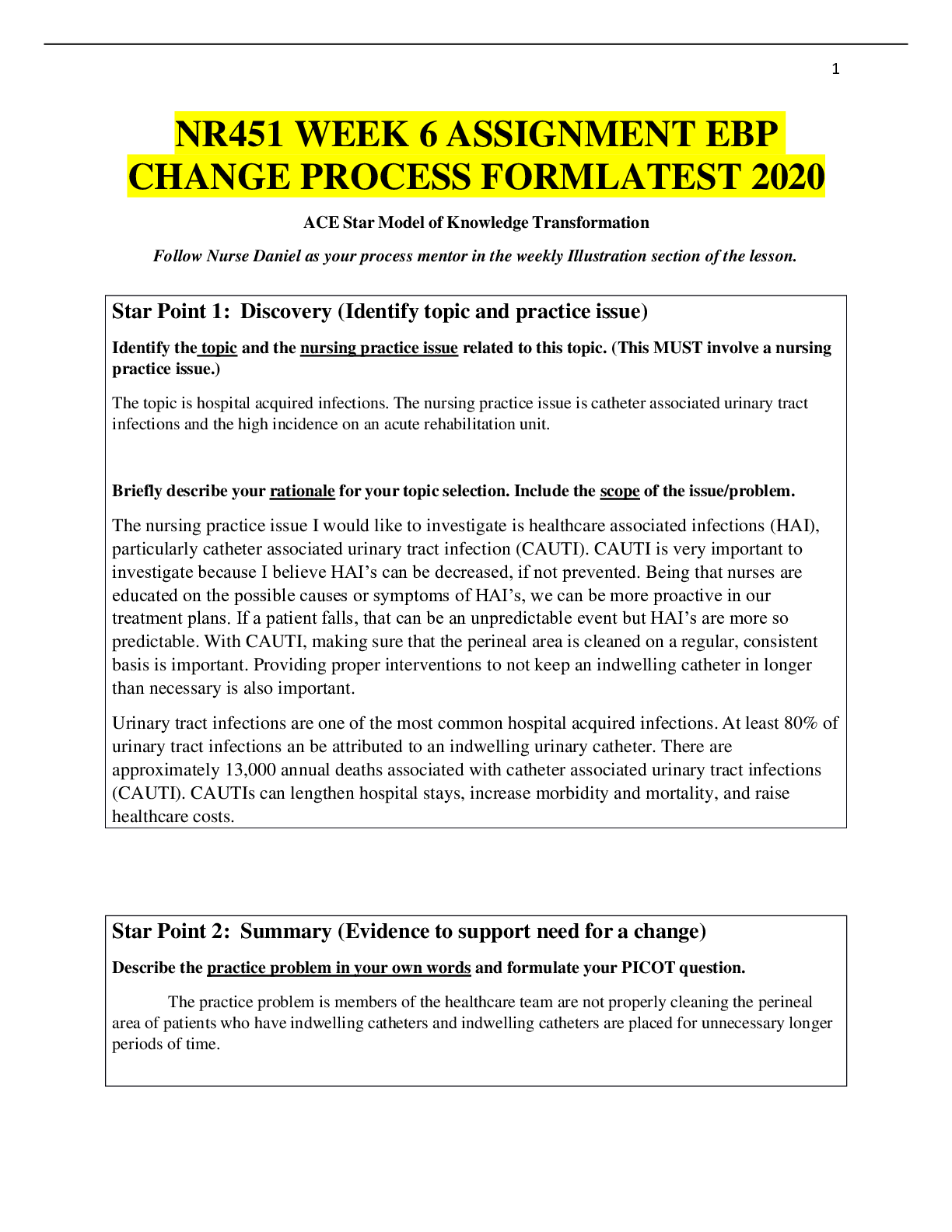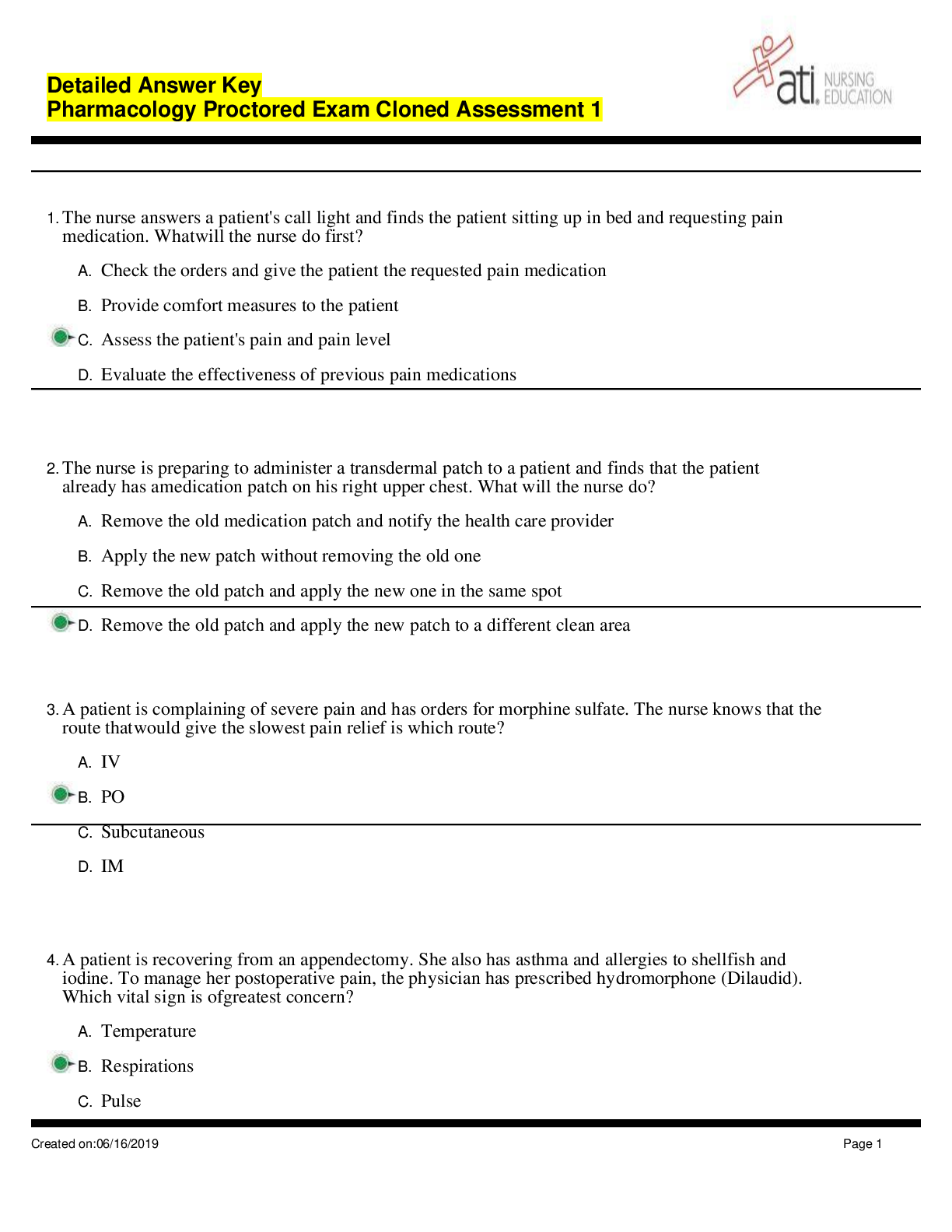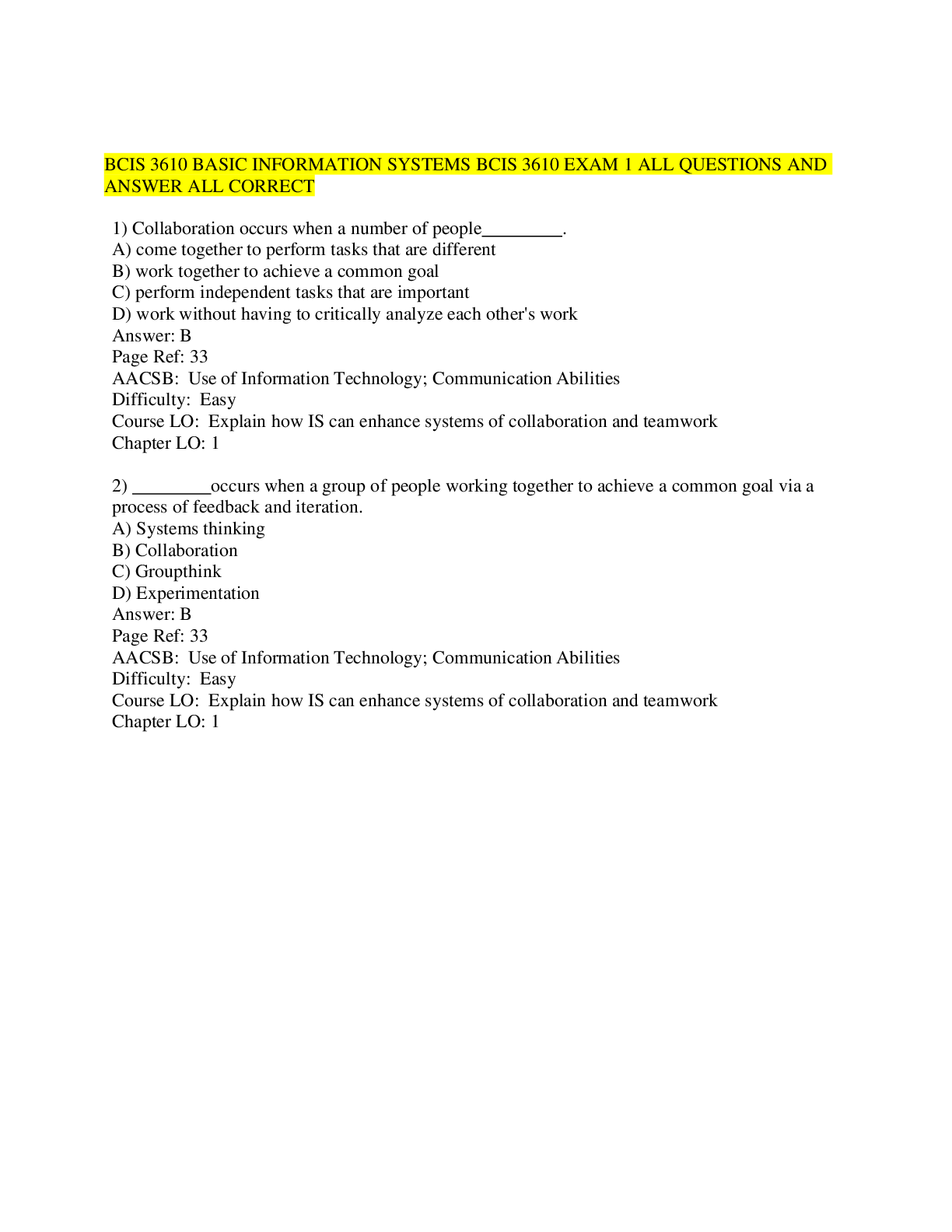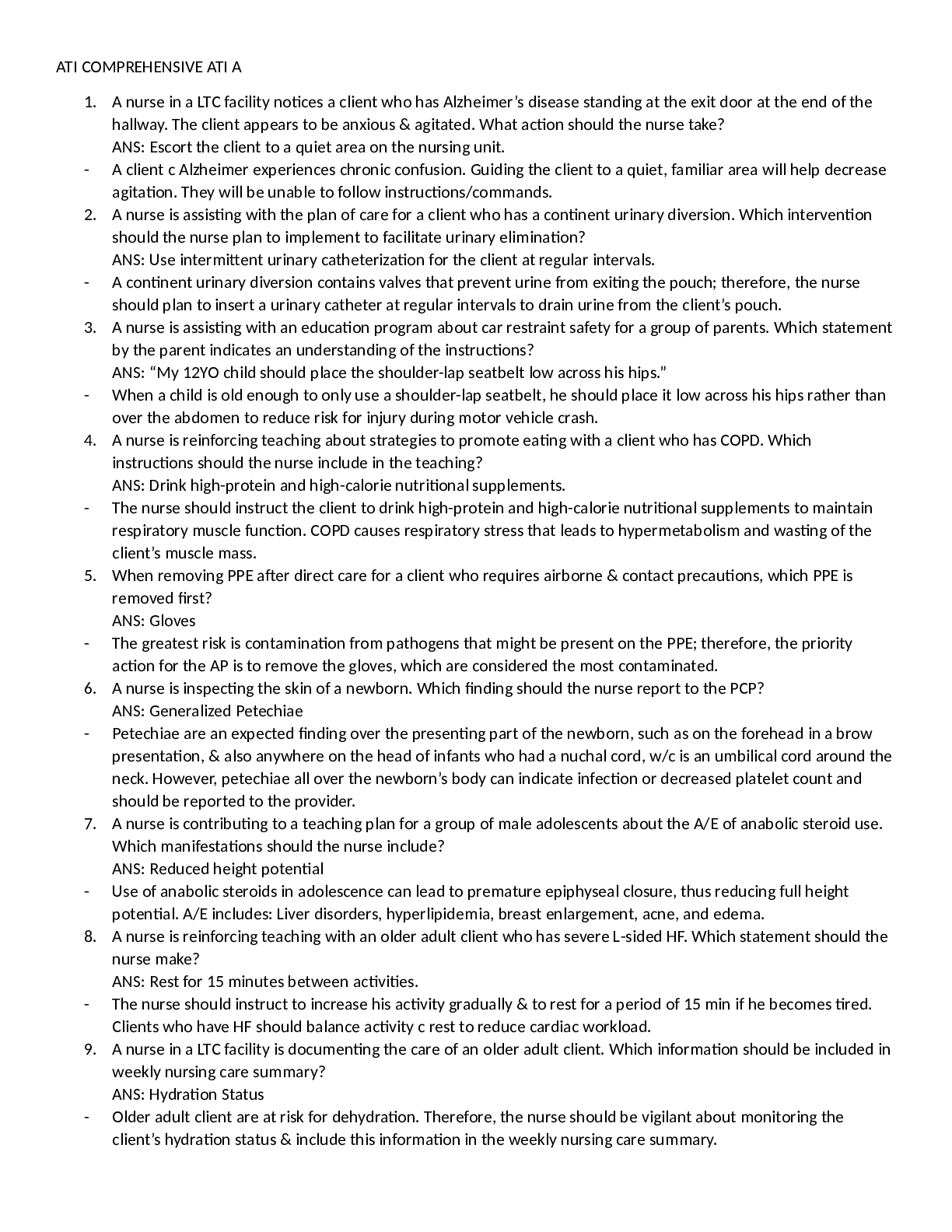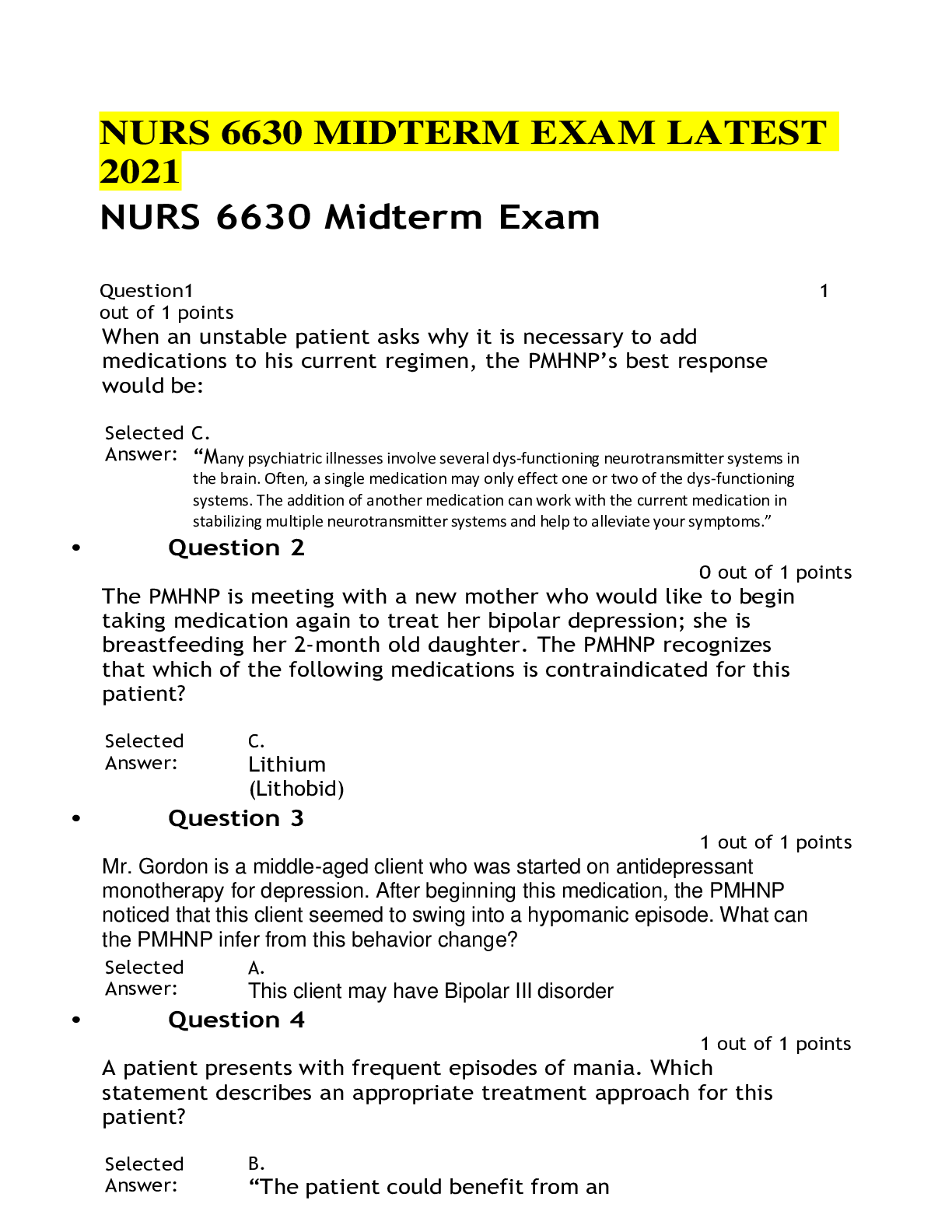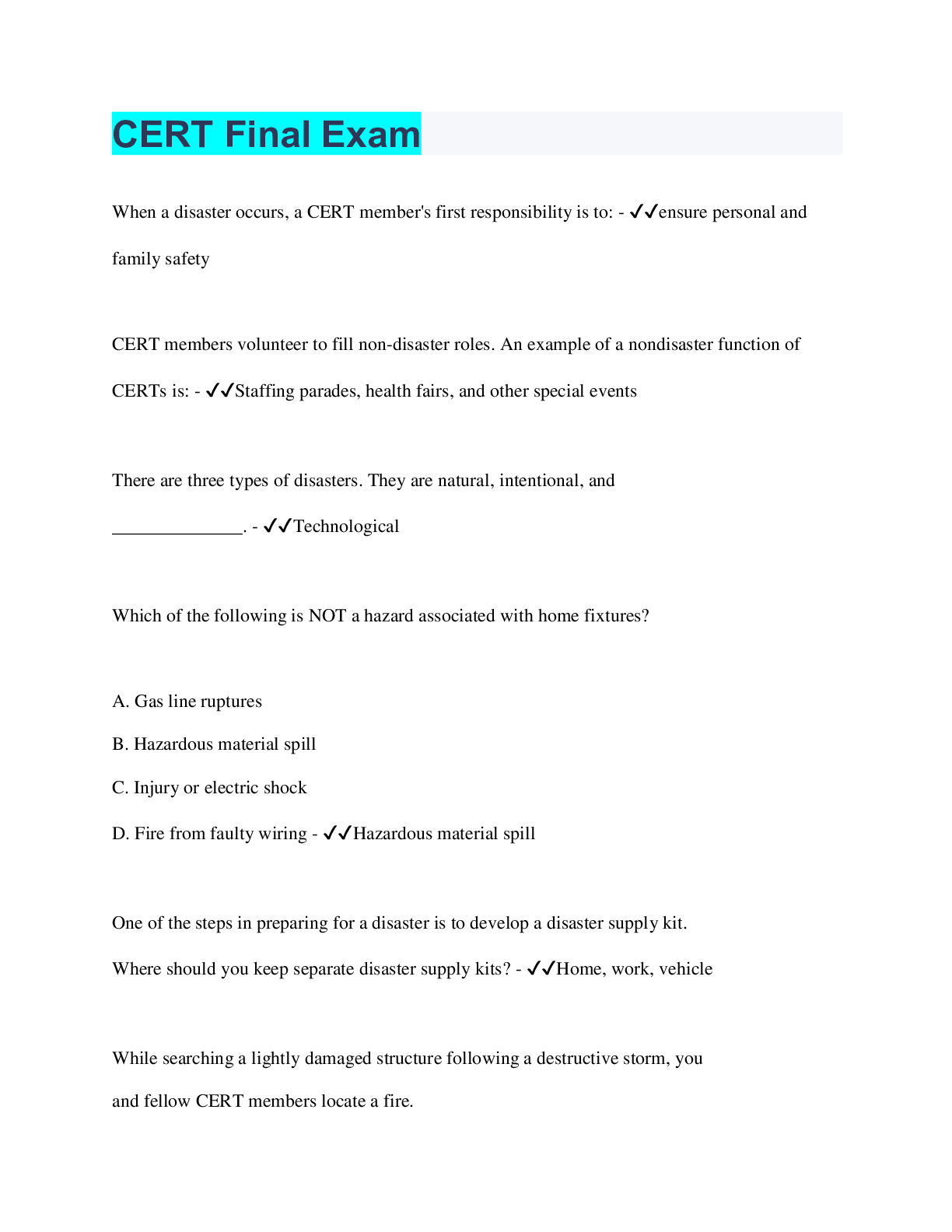Personal Trainer Cert Final exam section
Document Content and Description Below
Personal Trainer Cert Final exam section 51. Metabolism can be categorized in the following phases A. catabolism B. myotabolism C. anabolism D. A and C E. B and C F. A and B 52. BMR stands fo... r A. basic memory retention B. basal metabolic rate C. bregmatic myofascial release D. none of these 53. The primary (not initial) fuel during endurance exercise is A. liver glycogen B. muscle glycogen C. fatty acids D. none of these 54. The human body consists of A. chemicals B. cells C. tissues D. none of these E. all of these 55. The main purpose of the digestive system is A. the breakdown of foods and waste elimination B. to supply oxygen and eliminate carbon dioxide C. reproduction and maintenance of sexual characteristics D. none of these 56. The average human adult skeleton has A. 80 bones B. 126 bones C. 206 bones D. over 400 bones E. none of these 57. The points of muscle attachment are known as the A. insertion B. origin C. sesamoid D. A and B This study source was downloaded by 100000822447745 from CourseHero.com on 07-17-2022 09:06:30 GMT -05:00 https://www.coursehero.com/file/18132932/final-exam-section-2/E. none of these 58. Muscular hypertrophy is a(n) A. increase in muscle fiber size B. decrease in muscle fiber size C. increase in the number of muscle fibers D. decrease in the number of muscle fibers E. none of these 59. Kinesiology is A. the science or study of movement, and the active and passive structures involved B. the science of the morphology or structure of organisms C. the science concerned with the normal vital processes of animal and vegetable organisms D. the science concerned with the action of forces, internal, and external, on the living body E. none of these 60. An example of an antagonist muscle is the A. biceps during biceps curl B. internal and external obliques during a crunch C. triceps during a biceps curl D. pronator teres during pronation E. none of these 61. The angle of pull is A. the act of maintaining your body's balance B. an angle in which the muscle pulls relative to the long axis of the bone on which it pulls C. the sequential combination of movement outlining a geometric cone D. A and B E. A and C 62. A lever is defined as A. the work done in a unit of time B. the rotary (angular) movement in any plane around an axis C. a rigid bar that turns around an axis of rotation or fulcrum D. none of these 63. Musculoskeletal deviations can result in A. poor muscle balance B. poor flexibility C. improper spinal alignment D. all of these E. A and C 64. The knee is stab [Show More]
Last updated: 2 years ago
Preview 1 out of 8 pages
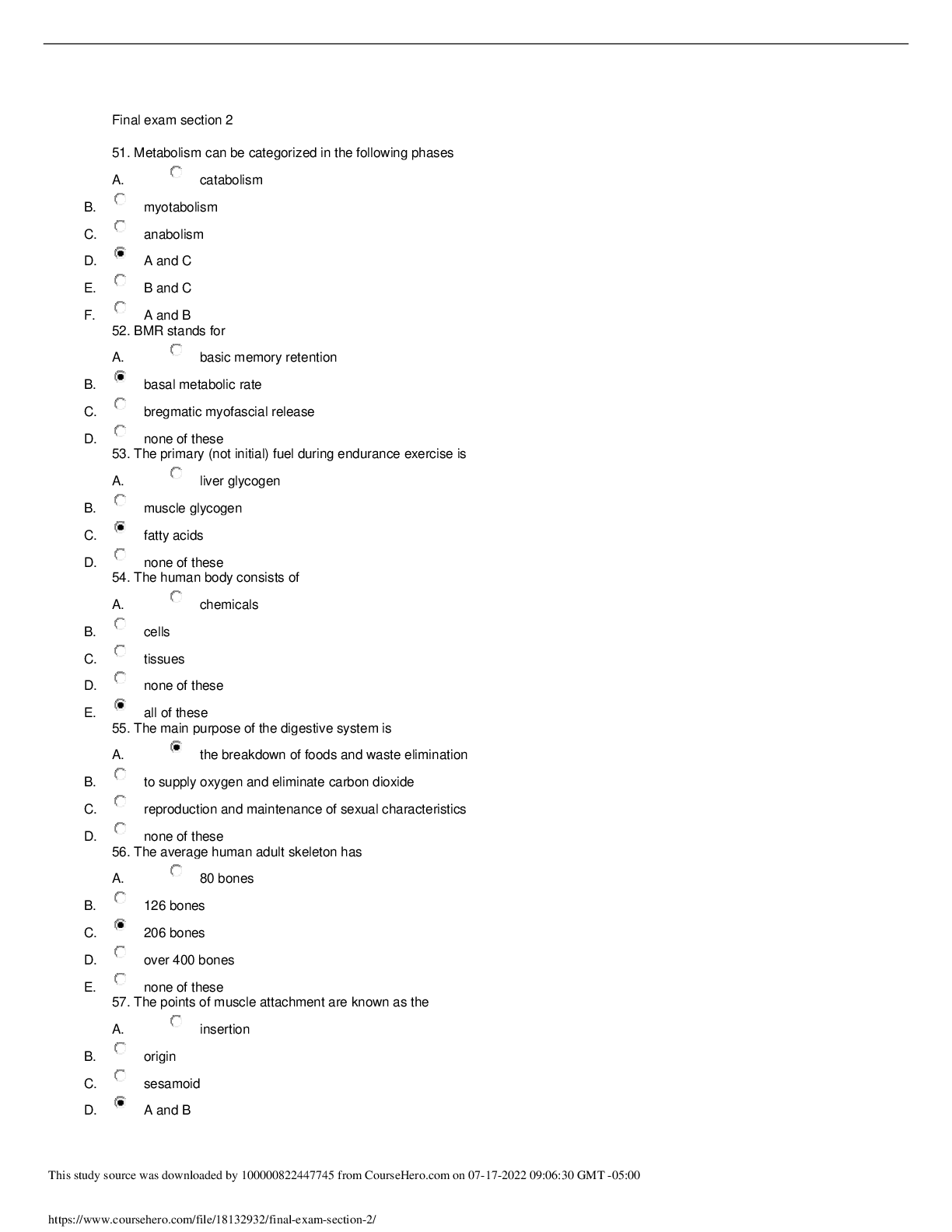
Buy this document to get the full access instantly
Instant Download Access after purchase
Buy NowInstant download
We Accept:

Reviews( 0 )
$7.00
Can't find what you want? Try our AI powered Search
Document information
Connected school, study & course
About the document
Uploaded On
Feb 04, 2023
Number of pages
8
Written in
Additional information
This document has been written for:
Uploaded
Feb 04, 2023
Downloads
0
Views
84

